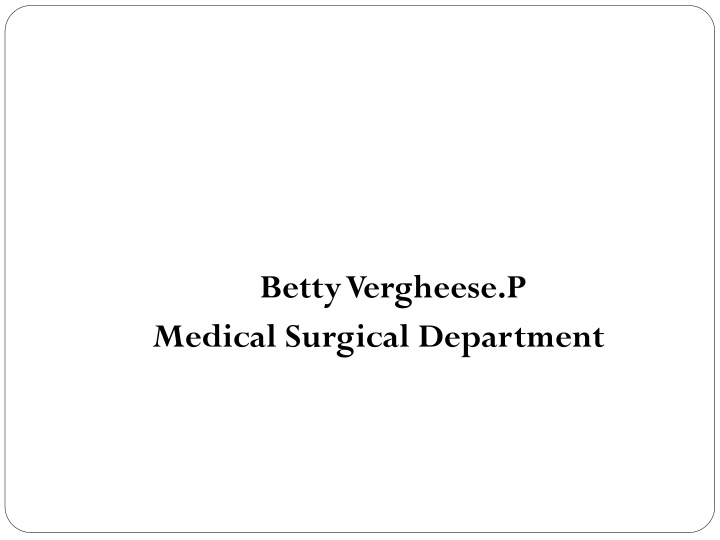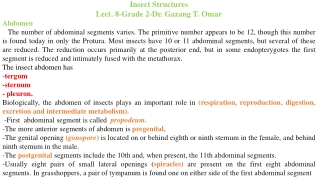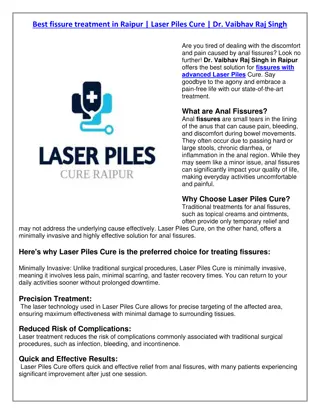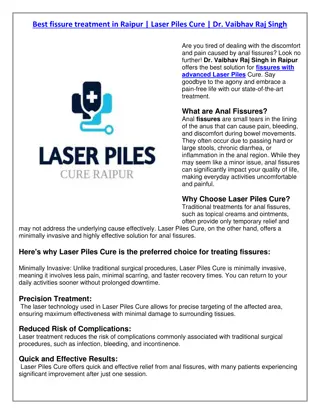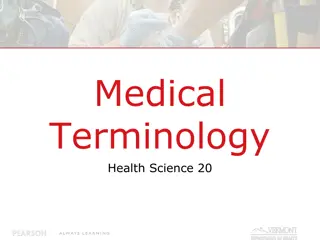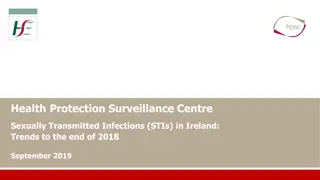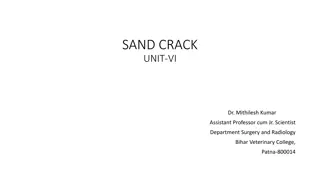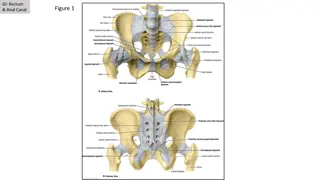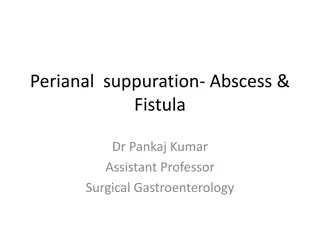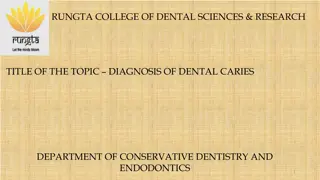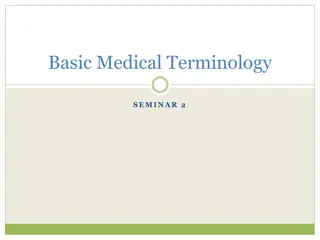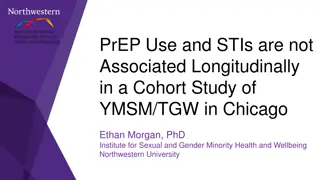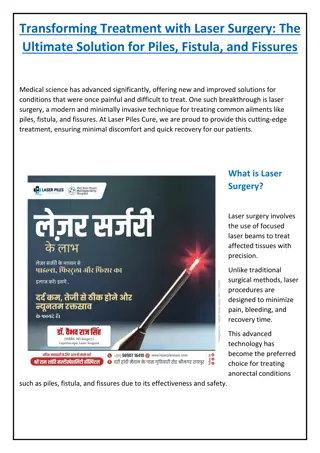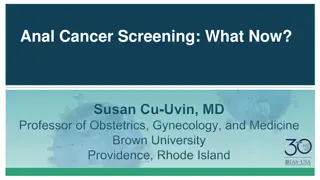Overview of Anal Fissures in Medical Practice
Anal fissures are painful tears in the anus lining that cause bleeding, pain, and itching. Learn about types, causes, symptoms, and clinical features of anal fissures in the medical field.
Download Presentation

Please find below an Image/Link to download the presentation.
The content on the website is provided AS IS for your information and personal use only. It may not be sold, licensed, or shared on other websites without obtaining consent from the author.If you encounter any issues during the download, it is possible that the publisher has removed the file from their server.
You are allowed to download the files provided on this website for personal or commercial use, subject to the condition that they are used lawfully. All files are the property of their respective owners.
The content on the website is provided AS IS for your information and personal use only. It may not be sold, licensed, or shared on other websites without obtaining consent from the author.
E N D
Presentation Transcript
BettyVergheese.P Medical Surgical Department
FISSURES FISSURES
Definition An anal fissure is a tear or cut in the skin that lines the anus causing a painful linear ulcer at the margin of the anus. The anal fissure can cause pain,bleeding and or itching. Most anal fissures occur along the mid-line ,the top or bottom-of the anus. .
TYPES TYPES Acute anal fissure recent onset Chronic anal fissure- present for a long time or occuring frequently. Chronic fissures often have a small external lump associated with the tear
CAUSES & RISK FACTORS CAUSES & RISK FACTORS a) Large or hard stools passing through the anal canal b) Constipation c) Straining during bowel movements d)Diarrhea e) Anal sex
f.Child birth g. Anorectal surgery h. Proctitis:inflammation of the lining of the rectum. I. A low fiber diet
Health conditions-cause 1) Vitamin B6 deficiency 2) Abdominal pain 3) Fever 4) Weight loss 5) Chrons disease 6) Inflammatory bowel disease
7.Syphilis 8. Suppressed immune system 9.Tuberculosis 10.HIV infection 11.cancer
CLINICAL FEATURES CLINICAL FEATURES Pain during or after defecation and bleeding. Sharp, stinging or burning pain during and following a bowel movement Spots of bright red blood on toilet tissue Itching and malodorous discharge may also occur A visible crack in the skin around the anus A small lump or skin tag on the skin near the anal fissure
Diagnostic measures Physical examination Anal manometry Flexible sigmoidoscopy colonoscopy
Anal Manometry Anal Manometry Non invasive test that measures the pressure and function of the anal and rectal muscles
Medical treatment Medical treatment 1. High fiber diet,bulking agents,plenty of fluids 2. Warm bath for 10-20 mts sitz bath with salt water 3.Pain killers-paracetamol 4.Local anesthetic ointments 5.Nitroglycerin applied locally twice daily every dya for 6 weeks 6.Botox injection- paralyzes the muscle of anal spincture
Surgical management Surgical management 1. Internal spincterotomy Cutting small portion of the inner muscle around the anus IP procedure Under general or spinal anesthesia 2. Anal dilation 3.Fissurectomy: is the first line surgical treatment of fissure.It is done with local advancement flap where after fissure excision the defect in the anal canal is closed by a small advancement flap. 4.Lord s dilatation : also known as blunt spincterotomy
Spincterotomy Spincterotomy
Life style and home remedies Life style and home remedies 1. Add fiber to diet: Getting enough fiber in diet- about 25 to 30 grams a day-improves fissure healing and helps keep stools soft. Increase fiber intake by eating more fruits,vegetables, nuts and whole grains. 2. Drink adequate fluids: Fluids help prevent constipation, so it's important to get enough fluids up to eight glasses a day. 3. Avoid too much tea and coffee as these can make constipation worse.
3. Exercise regularly: Engage in 30 minutes or more of moderate physical activity Exercise promotes regular bowel movements and increases blood flow to all parts of body, which may promote healing of an anal fissure 4. Avoid straining during bowel movements: Straining creates pressure, which can open a healing tear or cause a new tear.
GODS LOVE IS SO GODS LOVE IS SO WONDERFUL WONDERFUL
